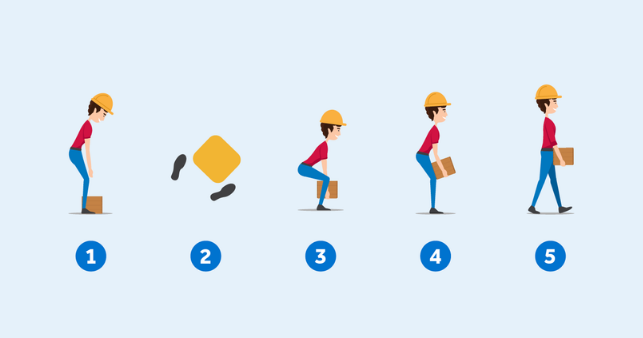
Basics of Manual Handling in the Workplace
admin
Course Overview
‘Manual handling’ is the act of moving an object using your physical body (specifically its hands). All employers must properly train their employees on safe and effective manual handling. This course will introduce you to the different types of manual handling and the risks and hazards associated with lifting, lowering and pushing items. Find out who is affected by manual handling and examine the causes and various forms of possible injuries. Familiarise yourself with the requirements for employers and employees under the United Kingdom’s Manual Handling Operation Regulations 1992.
Additionally, you will learn about the Health and Safety Executive (HSE) guidelines to help you identify and assess risks. Gain in-depth knowledge and understanding of musculoskeletal disorders and how to prevent them. Acquaint yourself with the rules and regulations for accident and incident reporting and uncover what kind of information the report must have. Find out when to notify an incident to the ‘Reporting of Injuries, Diseases and Dangerous Occurrences’ (RIDDOR) body and how to apply control measures. Learn how to conduct risk assessments as well as their importance.
Finally, you will learn how to reduce the risk in the workplace and minimise it for an incompetent individual. Learn to regulate safe working practices and everything you need to know about the ‘Load, Individual, Task and Environment’ (LITE) principle. Gain an understanding of why you should put on personal protective equipment and considerations for team handling, pushing and pulling loads. Anyone can benefit from this comprehensive course. It does not require experience or any qualifications for enrollment, so jumpstart your career today!
What You'll Learn?
- Explain the concept of manual handling
- Summarise the different types of manual handling in the workplace
- Outline the factors that lead to injuries in manual handling
- Recognise the different types of injuries and disorders
- State the legal obligations of the employer and employee
- Describe how to conduct a risk assessment
- List the steps for controlling and reducing risk in the work environment
- Indicate the process of accident and incident reporting in the workplace
- Discuss safe lifting, carrying and lowering techniques
- Everyone performs the lifting, pushing, pulling and carrying of items. This course teaches you about proper manual handling to maintain good health in a working environment. We look at the different techniques and safe weight lifting and lowering for both men and women. Find out the risks of poor lifting methods, correct postures for lifting loads and carry out risk assessments. In addition, learn the legal duties of employers and employees.
- 1.5-3 Hours of Learning
- CPD Accreditation
- Final Assessment
Course Content
-
Module 1: Manual Handling
-
-
Introduction, Legislation and Guidance
-
Manual Handling Regulations and Legislation
-
Manual Handling Hazards and Injuries
-
Accident and Incident Reporting
-
Manual Handling Risk Assessments
-
Controlling and Reducing the Risks
-
Manual Handling Control Measures
-
Safe Lifting Techniques
-
Lesson Summary
-
Lesson Summary
-
